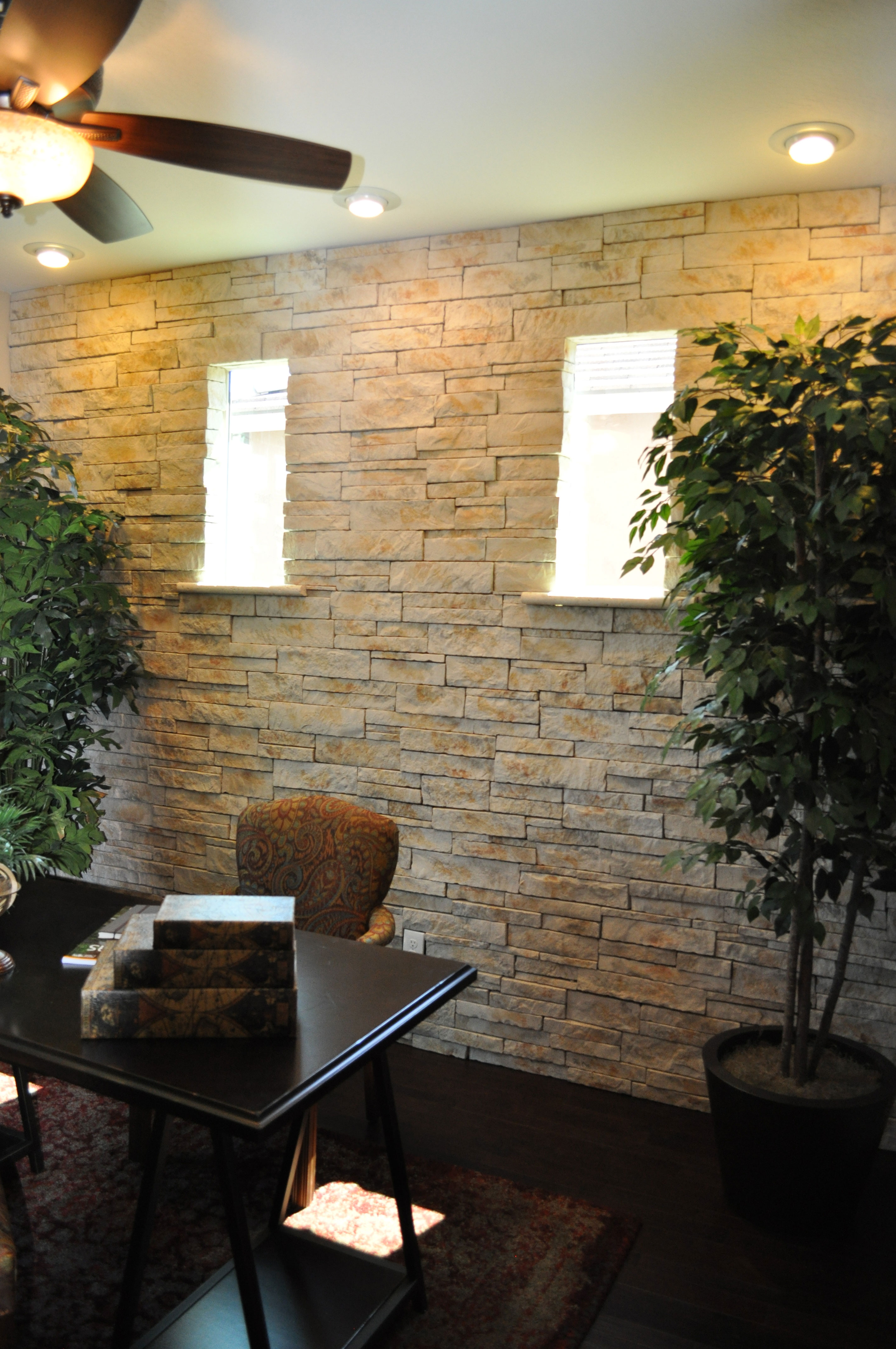When you’re planning your home’s décor, it’s easy to focus on color. But texture can be equally important. Choosing to include many different textures in your home makes it more interesting and unique. Let’s take a look at some options for adding textural elements to your home.
Architectural features: The stone focal wall in this study takes a standard room and makes it interesting. Since this room is open to the rest of the house, this one wall adds texture throughout the living area. Notice that the stone itself is fairly neutral and light. This allows you to modify the look and colors of the room over time without limiting your options.
Flooring: The dark wood floor has a handscraped finish which adds both depth and texture. With the handscraped option, floors reflect their wood origins more clearly. Whether you want wood, tile, carpeting or any other type of flooring, take the time to consider the flooring texture as well as the color.
Plants: Large-scale plants add texture through their leaves and branches. Shop around to find just the right variety for your home. Some do well in sun and some thrive in shade. Or you can incorporate silk plants for a lower-maintenance option.
Rugs: Layered flooring is one of the best ways to incorporate different textures into your home. The hard wood covered with a soft area rug grabs the eye and adds contrast to your floor.
Accessories: Everything from boxes and books to throw pillows can pull in additional texture. Take a look around each room in your home. Could you use more reflective surfaces? How about a nubby textile such as a wool throw?
By thinking beyond color to texture, you will add interest and sophistication to your home. Take a look around with texture in mind. You may be surprised at how just a few small changes can make a big difference.

